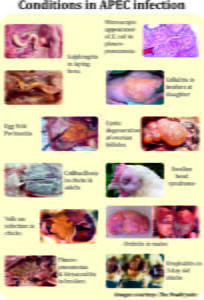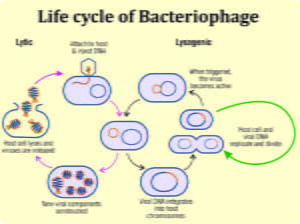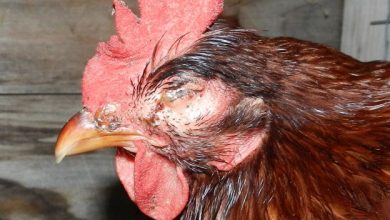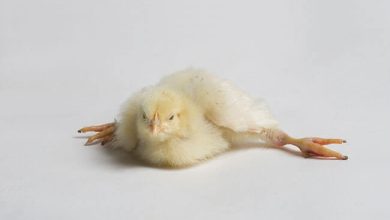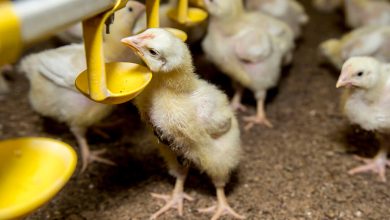E. coli infections in poultry and their successful management with Bacteriophages
Dr. Ajay Chalikwar,Zonal Technical Manager – Provet Pharma Pvt. Ltd.
Introduction:
Poultry faces tremendous pressure in terms of weight gain, efficient feed conversion, stress, disease challenge and resistance to anti-microbials. M ajor challenges are bacterial, viral, metabolic, mycotoxins, etc.
E.coli has emerged as a major infection in broilers, layers and breeders and is commonly encountered in almost all the poultry operations including hatcheries, meat processing plants, etc. irrespective of a good water sanitation programme.
Focus now is on E. coli infections in poultry and there effective control through the use of non-conventional therapies like Bacteriophages.
Brief about E.coli
E. coli is a Gram-negative, facultatively anaerobic, rod-shaped, non-spore forming, coliform bacterium belonging to Enterobacteriaceae. E. coli strains pathogenic to poultry are mostly extraintestinal and grouped under APEC (Avian Pathogenic E. Coli).
Diseases caused by E. coli are mostly systemic in poultry unlike mammals, where it causes gut related diseases. Most APEC strains are motile having peritrichous flagella, survive freezing and persist for extended periods at cold temperatures.
Reproduction of most strains is inhibited by a pH of less than 4.5 or greater than 9, but the organism is not killed. It is commonly seen as a secondary infection to other bacterial / viral infections and rarely as a primary infectious agent, but recent trends show that they have the ability to cause disease on their own.
It is a typically localized or systemic infection when host defences have been impaired. E. coli is the most frequent cause of mortality and can be isolated even from dead birds.
Normally poultry house dust contains 105 to 106 CFU/g of E. coli inside the houses and outside up to 40 feet area under dry conditions, but wetting reduces the count by 84-97%.
E. coli causes various infections in poultry like Omphalitis, Salphingitis, Egg Yolk Peritonitis, Colisepticemia, Colibacillosis, Cystic degeneration of ovarian follicles, Cellulitis, Coligranuloma, Arthritis, Sternal bursitis, etc.
Economic impact of APEC is mainly due to:
• Mortality
• Morbidity
• Slower growth rates
• Poor FCR
• Decrease in egg production • Downgrading of carcass • Spread of antimicrobial resistance to other bacteria
Antigenic structures and toxins of E. coli
Antigens are classified according to Kauffmann scheme. It contains 3 major antigens like 0 (somatic), H (flagellar) and K (capsular). Currently there are approximately 180-0, 60-H and 80-K antigens. The 0 antigen determines the serogroup & addition of the H antigen and sometimes K antigen determines serotype.
A PEC doesn’t produce enterotoxins unlike mammalian species. Immune response in poultry is directed against 0 antigen. Common serotypes found are 0, 02, 018, 035, 036, 078 and 0111.
Virulence factors involved
Adhesins – Fimbrial or non-fimbrial F1 fimbriae may be expressed during initial colonization whereas P fimbriae are expressed later when the organism is in the lower respiratory tract or body tissues. Bacteria are killed rapidly following expression of F1 fimbriae by macrophages.
Iron acquisition methods – Ability of APEC to obtain iron is well documented.
Protectins – Resistance of APEC to complement is related to K1 capsule, smooth LPS layer, and Outer membrane protein. Increased serum survival gene (ISS) in APEC has its role in complement resistance with a ColV plasmid which increases virulence in day old chicks by 100 times.
Factors that increase host susceptibility to E. coli infection
Virus
Adenovirus, Avian Influenza), New Castle Disease, Infectious Bronchitis, Avian Metapneumovirus, Infectious Bursa! Disease, Marek’s Disease and Chicken Infectious Anaemia.
Bacteria
Mycoplasma gallisepticum, Pasteurella multocida, Staphylococcus sp., Streptococcus sp..
Others
Invasion of skin barrier, excess ammonia in sheds, mycotoxins like ochratoxin and fumonisin, young age group, stress of various origin, sex (males are more prone), contaminated water and feed, dry dusty condition, feed / water restriction, parasitic infection, intestinal and caeca! coccidiosis, inadequate ventilation, dysbacteriosis, relatively high ammonia overcrowding, poor litter condition, temperature extremes and high temperature and high humidity.
Nutritional
Hypervitaminosis E, Hypervitaminosis A & Vit A deficiency, excess Iron & Selenium.
Adult house flies act as mechanical vectors and harbour organisms in their body and cause horizontal transfer of antibiotic resistance and virulence genes. L ow incubation period -5-7days.
Resistance of APEC to heavy metals, disinfectants & antibiotics
APEC has the ability to acquire resistance to Chlorhexidine, Formaldehyde, Hydrogen Peroxide, and Quaternary Ammonium Compounds (QACs) through acquiring resistance often encoded by large R plasmids. APEC Inc H12 & PAPEC-01-R plasmids confer resistance to silver, copper sulphate, Benzalkonium chloride following transferto recipient strain by conjugation. APEC Inc F IIA plasmid confers resistance toAminog lycosides, QACs, Phenolics, p, lactams & Silver.
APEC Inc A/C plasmid confers resistance to phenolics, QACs, aminoglycosides, sulpha drugs, tetracyclines and mercury.
It has inherent ability to form biofilms on abiotic surfaces like plastic/metal waterlines and protect itself from getting killed by the sanitizers.
Certain plasmids may also contribute to APEC’s acid and bile tolerance, affecting survival of APEC in the bird or elsewhere. Regional variations exist as far as resistance is concerned, as some strains are still susceptible.
E. coli control through the use of Bacteriophages
Bacteriophage is a non-pathogenic virus with a vast majority (about 96%) of known phages belonging to Myoviridae, Podoviridae and Siphoviridae. They are known as bacterial parasites because they lack the cell structure and enzyme systems necessary for food uptake, protein synthesis or construction of new particles, and as incomplete organisms can only replicate in a live cell.
Positive results of the use of bacteriophages in fighting bacterial infections have contributed to the research on the potential use of viruses that destroy bacteria in treatment of diseases in both human and animals. Their specificity and range of activity are determined by the presence of receptors located on the surface of bacterial cells, among which we can distinguish LPS fragments, fimbriae and othersurface proteins.
No mortality was observed in chickens treated with 108 PFU of an E. coli bacteriophage mixture. Due to the specificity of bacteriophages for a particular bacteria, manifested as the ability to infect only one species, serotype or strain, this mechanism of action does not cause destruction of the commensal intestinal microflora. A cocktail of more than one phage (at least 3 – 4) in sufficient concentration is synergistic.
Bacteriophage has 2 life cycles
Lytic
Phage acts like a typical virus, it hijacks its host cell and uses cell’s resources to make lots of new phages thereby causing lysis of the cell and death subsequently. Phages attach, enter the cell, copy DNA and synthesize protein, assemble new phages and cause lysis of the host cell with release of daughter phages capable of infecting other cells.
Lysogenic
Phage reproduces without killing its host. Some phages use the lytic life cycle and some switch between the 2 cycles. Here, there will be attachment of phage to host cell, injection of DNA into host cell, integration with bacterial chromosome and becoming prophage and finally cell division along with host cell.
Life cycle of Bacteriophage
Under the right conditions, the prophage becomes active and comes back out of bacterial chromosome, triggering lytic life cycle and killing the host cell.
Advantages of phage cocktail
Lead phage has very virulent activity and neutralizes a bacterial population within few hours of inoculation against a wide spectrum of E. coli.
Associate phage has lower virulence than lead phage but has very wide spectrum of activity and is very stable. This phage covers the bacterial population which evades the action of lead phage.
Guard phage is similar to associate phage in spectrum but can attach to a different kind of receptor with different mode of action and is mainly added to ensure protection against resistant E. coli. Synergistic action of these 3 phages will ensure complete bactericidal action.
CONCLUSION
Bacteriophage therapy is a very good solution as preventive measure in chicks in the first week and as a therapeutic thereafter as per the infection pressure.
Some authors suggest effects similar to antibiotics in preventing colibacillosis in chicks.
There is evidence that bacteriophages have the ability to penetrate the blood-brain barrier and confirm that bacteriophages have a prophylactic effect in addition to therapeutic effect.
Bacteriophages can be given orally, by aerosol spray or parenterally or along with antibiotics in case of severe E. coli challenge and can be given along with all live and inactivated vaccines (except live E. coli vaccine).
Bacteriophages enter blood circulation upon oral administration and control E. coli systemically. Under the right conditions, the prophage becomes active and comes back out of bacterial chromosome, triggering lytic life cycle and killing the host cell.
(References available on request)


